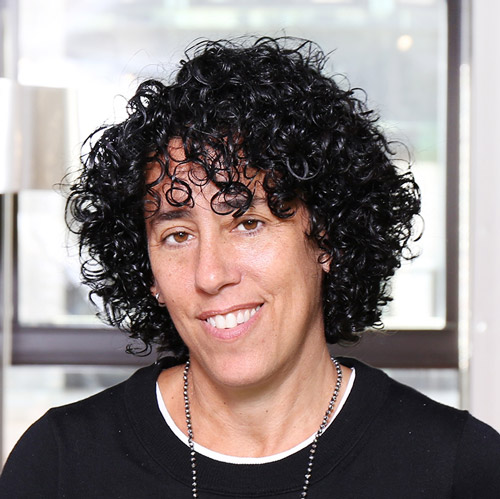Not many people can say, “When I was 10 years old, I woke up and said, ‘You know, one day I’m going to be a facilities manager.’”
It’s a line that Larry Charlip, senior director of facilities and real estate management for video game publisher Take-Two Interactive Software, likes to use when introducing himself to people for the first time. Actually, the statement’s only half true.
Upon finishing high school, Charlip didn’t have money for college, so he got a job as a mail clerk at a commodities-trading company that filed for bankruptcy soon after. He was cheap labor, so the company kept him on, and by the time he was 20, he’d been promoted to both mailroom manager and assistant office manager. The company went out of business within a few years, but Charlip—always a fast learner—parlayed his managerial experience into a job as office services supervisor at a division of the defense contractor Lockheed Martin in New York. Throughout these experiences, he kept thinking he would eventually go to college. However, the ball kept rolling and he discovered that learning on the job, along with a relentless work ethic, was his personal formula for success.
After stints with a handful of other companies, including managing the real estate portfolio of Werner Media—which publishes a number of magazines, including Rolling Stone, Men’s Journal, and US Weekly—he landed at Take-Two, where his 20-plus years of experience in facilities management is coming to fruition in a unique and challenging context.
“I care for every facility that I’ve ever worked in like it’s my home,” Charlip says of his success, adding that he has also been lucky enough to have fallen into situations that worked in his favor. “I’ve been very fortunate to have had some bosses that taught me how to be a professional, and worked with very good contractors and vendors who taught me everything from how to install phone systems to construction techniques and office design.”
Now involved with Take-Two’s 30 locations throughout the world, Charlip says that facilities management for a video-game company is definitely a niche skill. Take-Two is a parent company for two major video-game labels, each of which have a unique set of needs. The company is highly mindful of the unique cultures of their labels, and serves primarily as a resource for human resources, legal, finance, and facility needs.
“Our labels have worked very hard to cultivate their own cultures and work environments, and they are experts at what they do,” he says. “Our role is to support their businesses and creative endeavors so that they can achieve their creative vision.”
As a facilities director, this means interacting with the studios “almost as if I was an independent contractor managing the project,” he explains. “With each one, I have to figure out who my client is and what their needs are. When you’re building out offices for a law firm, or any other typical corporate client, they all look the same after a while—sheetrock is sheetrock, a dropped ceiling is a dropped ceiling. With a gaming studio, you have to understand the unique culture of each one and tailor the design to them, which makes it really interesting.”
Take-Two’s portfolio is extremely varied, and requires frequent travel to negotiate leases, confer with local managers, and make sure construction projects stay on time and on budget. At Take-Two’s New York City headquarters, Charlip oversees the mailroom and back-office reception (for which he is an old hand). In addition to this, he recently completed a 16,000-square-foot renovation project, which included a total redesign of one floor and the lobby of the century-old building that houses Take-Two’s headquarters.
“A building that old brings about many unique challenges with floor elevations, building systems, and acoustical issues,” Charlip says. “We worked with a great general contractor, SPK Lewis, who is able to go with the flow and navigate the challenges.”
He also recently completed a “motion capture studio”—essentially, a space where human actors are filmed to provide the basis for the animation sequences used in video games.
“When they make a video game, they send actors in who are wearing these special spandex suits with little white balls all over them that enable their movement to be translated to animation,” Charlip says. “A motion capture studio is basically a giant space resembling a warehouse or an airplane hangar, like where you might record a movie—high ceilings, a lot of video cameras, and a lot of open space to be able to reconfigure it in different ways to make different scenes.”
Video-game designers are a highly creative bunch, and are full of ideas about how they want to use their space, Charlip says. Therefore, he invites input from the designers for “mini charrettes,” where he takes notes on aesthetic preferences, the “feel of the space” they’re looking for, and the optimum layout to suit their workflow. Designers also work long hours, so making the studio feel like home is paramount. Pool tables, ping-pong, and other such amenities are often requested for studio lounges as a way to blow off steam and foster a team environment.
Charlip says working with such creative minds is exciting and truly helpful in the design process. Creativity is why the studios are successful at what they do, though they do appreciate having more “business-focused” resources to help with this aspect of their work.
“It’s a little bit different than a typical corporate environment where you’re dealing with people who are lawyers or stock brokers,” Charlip says. “I’ve had to become accustomed to partnering with creative teams to let them play a role in this process, while making sure the office actually gets built the way they want it to be built. It’s all about partnering and achieving the end result together.”


